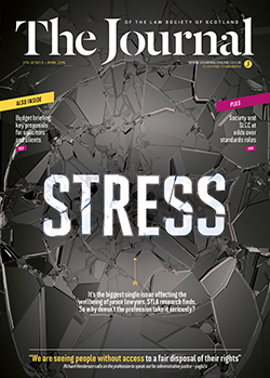Extended liability?

As a long-time adviser to the licensed trade, I have often complained that these simple retailers are subject to far more regulation than any other trade, with the possible exception of manufacturers of plutonium. Like many businesses, they are subject to visitations from HMRC, with more emphasis on VAT than many. So what – aren’t we all? But are you regularly being visited by people from police, licensing standards, weights and measures, trading standards, food hygiene, fire and environmental services?
How easy would it be for actions of your staff to put you out of business, or render you liable to a fine? Someone working behind your bar or behind the counter of your shop, by a simple act of carelessness, can result in a suspension or revocation of your licence to sell alcohol or tobacco by dint of what is incorrectly described in the Licensing Acts as vicarious liability. In that context it should be responsibility.
Test reaffirmed
Vicarious liability in the correct sense affects all employers, but I was especially interested in the recent Supreme Court decision in the case of Mohamud v WM Morrison Supermarkets plc [2016] UKSC 11 (2 March 2016). It obviously related to a supermarket and, according to press reports, it seemed to change the law on the point.
Mohamud was a customer at a Morrison’s petrol station. He asked the shop assistant, Amjid Khan, if he could print off some documents from a memory stick. An argument ensued. Khan followed Mohamud out into the forecourt and seriously assaulted him, despite the attempted intervention of a Morrison’s supervisor. Mohamud’s claim was rejected by the courts up to and including the Court of Appeal. Their Lordships there stated: “He [Khan] was not given duties involving a clear possibility of confrontation or placed in a situation where an outbreak of violence was likely. The fact that his employment involved interaction with customers was not enough to make his employers liable for his use of violence towards the claimant.” An appeal was made to the Supreme Court and pursued by the claimant’s family, Mohamud having died in the interim through unrelated causes. The claim was successful.
We all know it is dangerous to accept a press report of a case; however, without reading the judgment to the very end one might well become confused. The court was unanimous in its decision. When the leading judgment contains a brief summary of the successful argument, this is often the key to the ratio. Lord Toulson said: “In this court the claimant’s primary argument was that the time has come for a new test of vicarious liability. In place of the ‘close connection’ test the courts should apply a broader test of ‘representative capacity’. In the case of a tort committed by an employee, the decisive question should be whether a reasonable observer would consider the employee to be acting in the capacity of a representative of the employer at the time of committing the tort.”
He then gave a lengthy summary of the evolution of the law on vicarious liability and found in favour of the plaintiff, without addressing counsel’s proposed new definition. It was left to Lord Dyson to deal with. In summary, he rejected it out of hand, saying: “The close connection test has now been repeatedly applied by our courts for some 13 years. In my view, it should only be abrogated or refined if a demonstrably better test can be devised. Far from being demonstrably better, the proposed new test is hopelessly vague. What does ‘representative capacity’ mean in this context? And by what criteria is the court to determine the circumstances in which the reasonable observer would consider the employee to be acting in a representative capacity? I do not see how this test is more precise than the close connection test or how it better reflects modern views of justice. The attraction of the close connection test is that it is firmly rooted in justice. It asks whether the employee’s tort is so closely connected with his employment as to make it just to hold the employer liable.”
How to draw the line?
The decision surprised me. Would it have been the same had the defendant been a small local garage? Where would the line of justice have been drawn? The judgment refers to a couple of cases where bar staff have assaulted patrons, with two differing decisions. I suppose this is just one more concern for the hard-pressed licensee. Time, once again, to review training and supervision practices, to say nothing of double checking the insurance cover.
In this issue
- Family ADR: why the slow takeup?
- Electronic cigarettes: the medicine of tomorrow?
- Official advice: must do better
- Privacy Shield, the new Safe Harbor
- Maternity: still black marks
- Designed for justice
- Reading for pleasure
- Opinion: Tim Musson
- Book reviews
- Profile
- President's column
- 20 is the new 40
- People on the move
- Stress: the common enemy
- A safer way to talk
- Mind the gap
- SLCC: a role in standards?
- Budget 2016: a spoonful of sugar?
- Rights lost to sight?
- Take care with care services
- How the Sheriff Appeal Court fits in
- Extended liability?
- Periti credere? [Experts believe]
- What's happening on the review
- Scottish Solicitors' Discipline Tribunal
- Deeds of conditions: emerging stronger
- In-house and staying in demand
- Further warning over historic client balances
- Law reform roundup
- Perceptions and priorities
- Training is the key
- Ask Ash
- By diverse means
- The literal truth






